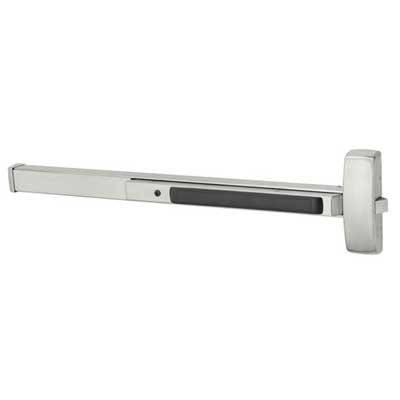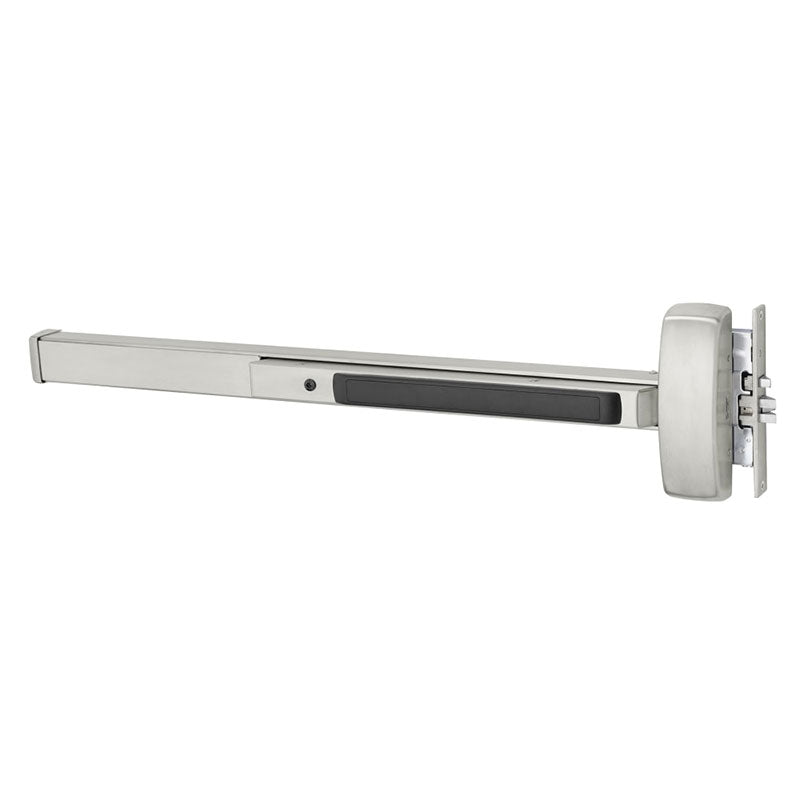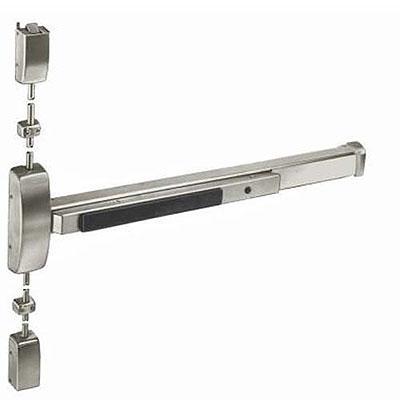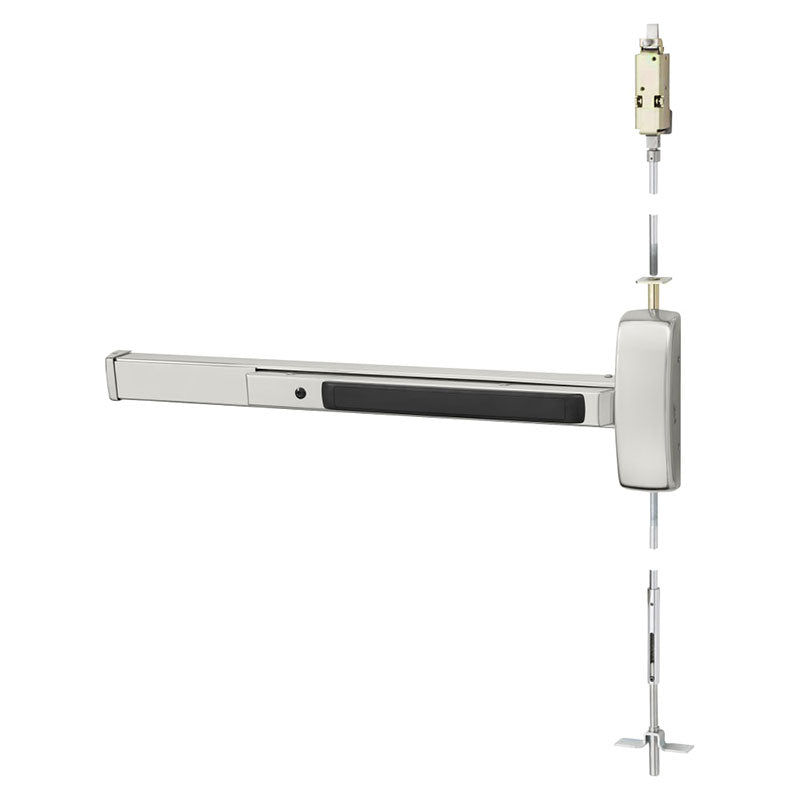Safety is crucial, and when it comes to buildings, exit devices or panic bars are at the forefront. These devices are more than just metal bars on doors; they're life-saving mechanisms. But with so many types out there, how do you pick the right one?
Let's break it down in a way that's easy to understand and relevant to you.
Why Should You Care About Exit Devices?
Imagine being in a room with lots of other people, and there's an emergency. You'd want a quick and safe way out, right? That's where panic bars come into play. The International Building Code (IBC) has specific guidelines about when and where these devices should be used, especially in larger rooms or gathering spaces.
Code Requirements for Panic Hardware
Now, you might be wondering, "When exactly is panic hardware required?" It's a common question, and the answer isn't always straightforward. Both the Life Safety Code (NFPA 101) and the IBC have set rules, but they can vary.
Understanding the code specifics, the IBC, from its 2006 edition onwards, mandates the use of panic hardware in Assembly and Educational spaces with an occupant capacity of 50 or more. This also extends to all High Hazard occupancies.
The occupant load is calculated by dividing the room's area by the stipulated square footage per person, which can vary based on the type of occupancy. This implies that many spaces might necessitate the installation of panic hardware.
Panic Hardware vs. Fire Exit Hardware: What's the Difference?
Let's simplify this:
- Panic Hardware: This exit device is tested for doors necessitating panic hardware but isn't suitable for fire doors. It often features a dogging mechanism, allowing latches to retract, facilitating a push/pull function.
- Fire Exit Hardware: Tested for both panic and fire conditions, this is mandatory for fire doors where panic hardware is either required by code or preferred for its durability. As fire doors need positive latching, this hardware lacks mechanical dogging. For a push/pull function on a fire door, electric latch retraction hardware is the go-to, ensuring automatic latch projection during fire alarms.
Different Types of Exit Devices
1. Rim Exit Device
Directly mounted on the door's surface, this device's latch connects with a strike plate on the door frame, ensuring efficient functioning and a secure lock. Some of the top of the line Rim Exit Devices include Corbin Russwin's ED5200A, Sargent's 8800 Series and Von Durpin 98/99 Series.

- Operation: Crafted for smooth operation, a simple press or push on the panic bar releases the latch with ease.
- Typical Use: It's a popular choice for single exterior doors or the primary leaf of double doors, offering top-notch security and resilience against daily use.
- Security: Among all exit device applications, Rim Exit Devices stand out as the most secure.
- Application: Think of the main exit doors in small businesses. The goal? Preventing unauthorized access while ensuring ease of maintenance.
2. Mortise Exit Device
Seamlessly integrated into a door cavity (specifically, a mortise 8” lock front), it ensures the latch unlocks smoothly. Popular lines include Sargent's 8900 Series and Von Duprin's 9875 Exit Devices.

- Typical Use: It's the go-to for doors where aesthetics meet functionality, adding an extra safety layer and demanding minimal upkeep.
- Key Advantage: Mortise panic devices are a security powerhouse. Why? They're integrated into the door, making them more robust and secure than their surface-mounted counterparts.
- Functionality: Thanks to the 8” body, Mortise Exit Devices come with a broader range of functions, giving institutions and facilities more versatility.
- Application: Picture the front doors of commercial spaces, where the need is for durable hardware that keeps potential intruders at bay.
3. Vertical Rod Exit Device
Featuring rods anchored vertically on the surface of the door, it ensures a secure lock at both ends. Popular Surface Vertical Rod Exit Devices include the Sargent 8700 series, Corbin Russwin ED5400, Von Duprin 9827 & 9927.

- Operation: A simple push or shove is all it takes to unlock the door.
- Typical Use: Perfect for double doors that see frequent use, designed to withstand daily challenges.
- Application: Envision auditorium doors that demand both security and ease of maintenance.
4. Concealed Vertical Rod Exit Device
Nestled within the door, this device offers efficient operation while enhancing the door's aesthetic appeal. Popular Concealed Vertical Rod Exit Devices include Sargent's 8400 and 8600 series, Corbin Russwin's ED5800 series, and Von Duprin 9847 & 9947 exit devices.

- Operation: A gentle press on the bar, and voila! The concealed rods release.
- Typical Use: Ideal for venues valuing aesthetics, with the concealed feature adding a touch of safety.
- Application: Luxury venues with a focus on preventing unauthorized access and long-lasting hardware.
5. Multi-Point Exit Device
Locking at multiple points on the door frame, it's a fortress of security.
- Operation: A deliberate push or press, and the multiple latches unlock in a second.
- Typical Use: Essential for areas where security is very essential.
- Application: Think government buildings that need durable, low-maintenance hardware that can endure daily challenges.
Remember, these devices are designed to last. A little care, regular check-ups, and they'll serve you well for years. Safety is a journey, not a destination. And as you plan your building's safety measures, understanding and choosing the right exit device is a crucial step in that journey. Stay safe and make informed choices!
For more insights and top-notch door hardware solutions, check out QualityDoor.




